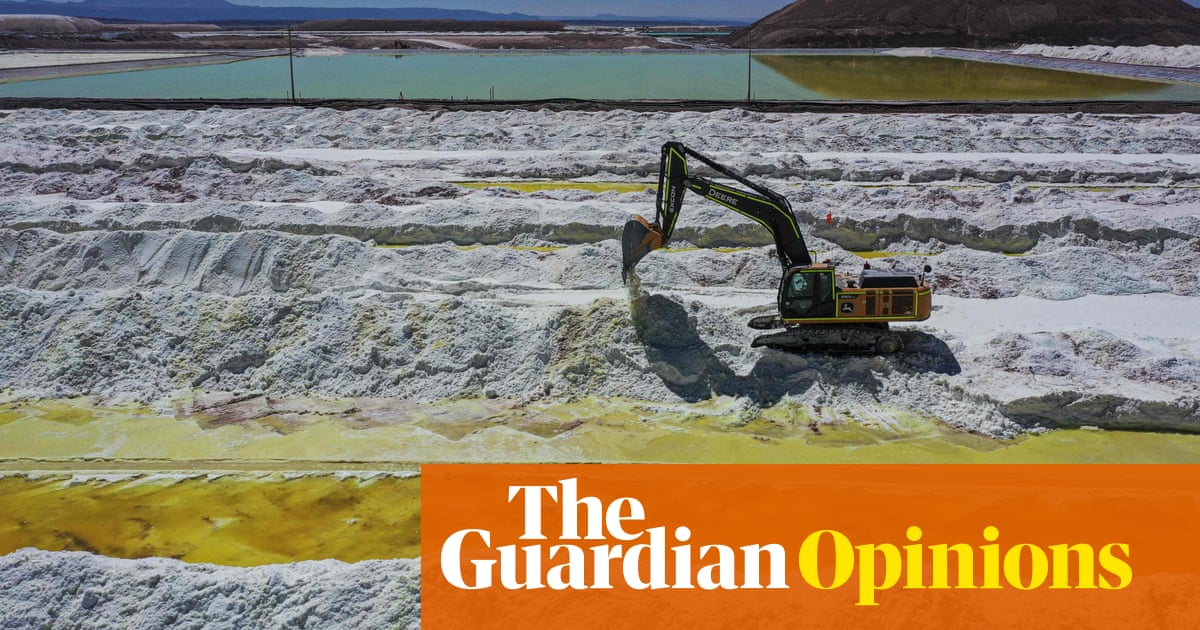- cross-posted to:
- technology@lemmy.ml
- cross-posted to:
- technology@lemmy.ml
Despite its name, the infrastructure used by the “cloud” accounts for more global greenhouse emissions than commercial flights. In 2018, for instance, the 5bn YouTube hits for the viral song Despacito used the same amount of energy it would take to heat 40,000 US homes annually.
Large language models such as ChatGPT are some of the most energy-guzzling technologies of all. Research suggests, for instance, that about 700,000 litres of water could have been used to cool the machines that trained ChatGPT-3 at Microsoft’s data facilities.
Additionally, as these companies aim to reduce their reliance on fossil fuels, they may opt to base their datacentres in regions with cheaper electricity, such as the southern US, potentially exacerbating water consumption issues in drier parts of the world.
Furthermore, while minerals such as lithium and cobalt are most commonly associated with batteries in the motor sector, they are also crucial for the batteries used in datacentres. The extraction process often involves significant water usage and can lead to pollution, undermining water security. The extraction of these minerals are also often linked to human rights violations and poor labour standards. Trying to achieve one climate goal of limiting our dependence on fossil fuels can compromise another goal, of ensuring everyone has a safe and accessible water supply.
Moreover, when significant energy resources are allocated to tech-related endeavours, it can lead to energy shortages for essential needs such as residential power supply. Recent data from the UK shows that the country’s outdated electricity network is holding back affordable housing projects.
In other words, policy needs to be designed not to pick sectors or technologies as “winners”, but to pick the willing by providing support that is conditional on companies moving in the right direction. Making disclosure of environmental practices and impacts a condition for government support could ensure greater transparency and accountability.



So… Absolutely need to be aware of the impact of what we do in the tech sphere, but there’s a few things in the article that give me pause:
What matter is the electrical energy converted to heat. How much was it and where did that heat go?
Can you say non sequitur ?
The outdated network holding back housing is that it doesn’t go to the right places with the capacity needed for the houses. Not that OpenAIUK is consuming so much that there’s no power left. To use a simily, there’s plenty of water but the pipes aren’t in place.
This article is well intentioned FUD, but FUD none the less.
The point they are trying to make is that fresh water is not a limitless resource and increasing usage has various impacts, for example on market prices.
The point being made is that resources are allocated to increase network capacity for hyped tech and not for current, more pressing needs.
Is there a reason it needs to be fresh water? Is sea water less effective?
corrosion
Oh makes sense.
A lot of industry does use grey water or untreated water for cooling as it’s substantially cheaper to filter it and add chemicals to it yourself. What’s even cheaper is to have a cooling tower and reuse your water, in the volumes it’s used at industrial scales it’s really expensive to just dump down the drain (which you also get charged for), when I worked as a maintenance engineer I recall saving something like 1m cad minimum a year by changing the fill level in our cooling tower as it would drop to a level where it’d trigger city water backups to top up the levels to avoid running dry, and that was a single processing line.
Nope. Here’s how data centres use water.
It boils down to two things - cooling and humidification. Humidification is clearly not a closed loop, so I’ll focus on the cooling:
Since some evaporates you’ll need to put more water into the system. And there’s an additional problem: salts don’t evaporate, they concentrate over time, precipitate, and clog your pipes. Since you don’t want this you’ll eventually need to flush it all out. And it also means that you can’t simply use seawater for that, it needs to be freshwater.
Freshwater renews at a limited rate.
Mostly to the air, as promoting the evaporation of the water.
More like non sequere than non sequitur. Read the whole paragraph:
The author is highlighting that electrical security is already bad for you Brits, for structural reasons; it’ll probably get worse due to increased household consumption; and with big tech consuming it, it’ll get even worse.
Data center cooling towers can be closed- or open-loop, and even operate in a hybrid mode depending on demand and air temps/humidity. Problem is, the places where open-loop evaporative cooling works best are arid, low-humidity regions where water is a scarce resource to start.
On the other hand, several of the FAANGS are building datacenters right now in my area, where we’re in the watershed of the largest river in the country, it’s regularly humid and rainy, any water used in a given process is either treated and released back into the river, or fairly quickly condenses back out of the atmosphere in the form of rain somewhere a few hundred miles further east (where it will eventually collect back into the same river). The only way that water is “wasted” in this environment has to do with the resources used to treat and distribute it. However, because it’s often hot and humid around here, open loop cooling isn’t as effective, and it’s more common to see closed-loop systems.
Bottom line, though, I think the siting of water-intensive industries in water-poor parts of the country is a governmental failure, first and foremost. States like Arizona in particular have a long history of planning as though they aren’t in a dry desert that has to share its only renewable water resource with two other states, and offering utility incentives to potential employers that treat that resource as if it’s infinite. A government that was focused on the long-term viability of the state as a place to live rather than on short-term wins that politicians can campaign on wouldn’t be making those concessions.
They can be closed-loop as in your region but they usually aren’t - besides the problem that you mentioned, a closed loop increases electricity consumption (as you’ll need a heat pump instead), and electricity consumption is also a concern. Not for the environmental impact (corporations DGAF), but price.
700.000 litres also sounds like much more than 700 m³. The average German citizen consumed 129 litres per day or roughly 47 m³ annually. The water consumption of 15 people is less than most blocks.
Energy consumption might be a real problem, but I don’t see how water consumption is that big of a problem or priority here.
It’s usually not the water itself but the energy used to “systemize” water from out-of-system sources
Pumping, pressurization, filtering, purifying all take additional energy.
That seems like a lot. Where are you getting that number?
I would assume that includes stuff like toilets,baths,showers,dishes and hand washing etc as fresh water uses. Either that or Germans are the ultimate hydrohommie.
A quick search says 3.7L is the recommended intake for men, and 2.7L for women. Forget AI, Germans appear to be the real resource guzzlers!
Here “consume” means far more than just “drank”. If you take a shower at home, you are consuming water. Wash your car? Consume water. Water your garden? Consume water.
Aha! That makes a lot more sense with that framing.
EDIT: In 2019 in Canada the daily residential average was 215L per day. 129L seems like a dream in contrast.
I imagine the number goes up considerably when you account for showering, washing clothes and dishes, and water used while cooking. It would go up even more if you account for the water used to produce the food consumed by the individual.
The EPA states that each American uses an average of 82 gallons or 310.4 litres a day (study from 2015). Source: https://www.epa.gov/watersense/statistics-and-facts
Liters are a great unit for making small things seem large. I’ve seen articles breathlessly talking about how “almost 2000 liters of oil was spilled!” When 2000 liters could fit in the back of a pickup truck.
Water “consumption” is also a pretty easy to abuse term since water isn’t really consumed, it can be recycled endlessly. Whether some particular water use is problematic depends very much on the local demands on the water system, and that can be accounted for quite simply by market means - charge data centers money for their water usage and they’ll naturally move to where there’s plenty of cheap water.
Oil is different because 1 ppm can ruin a whole litre or something in that direction.
Assuming that’s true, most of the oil tends to clump together. 2000L doesn’t just perfectly disperse out across billions of litres of water.
That just means you have no intuitive sense of how large a litre is. If they’d written it as “2000 quarts” (which is close enough to being the same volume at that level of rounding) would it have painted a clearer picture in your head?